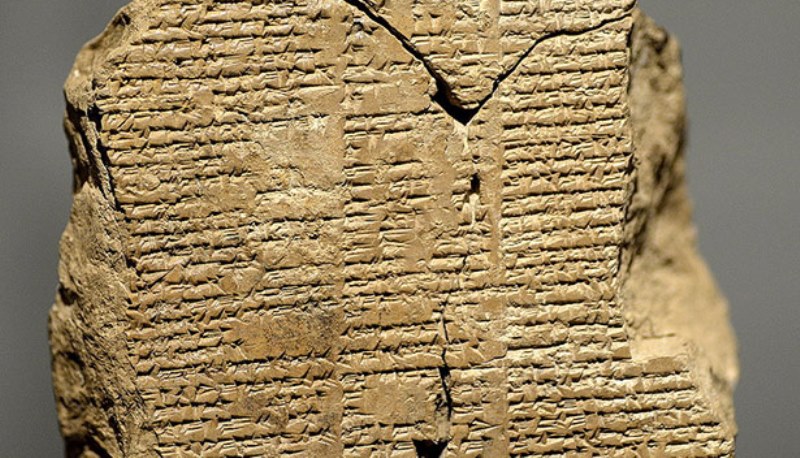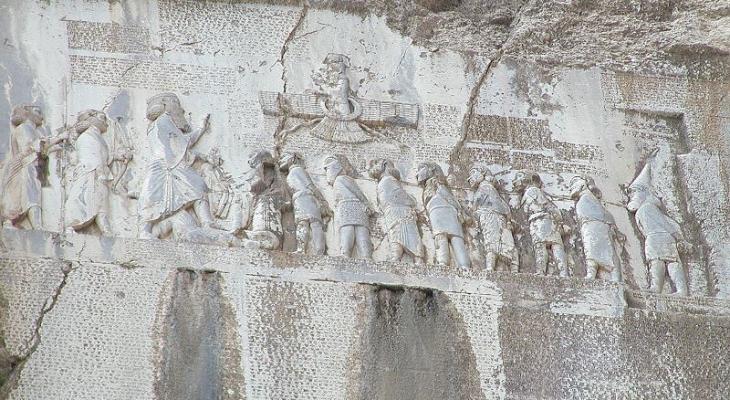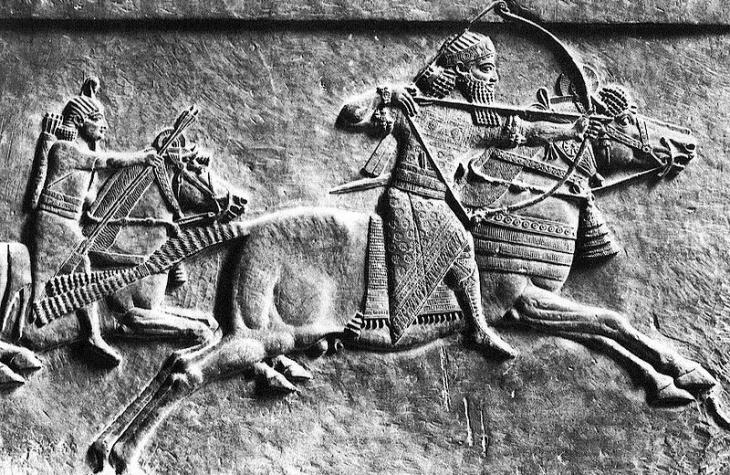Deciphering the first written language

In 1916, Rainer Maria Rilke wrote in a letter to Helene von Nostitz: "I have immersed myself in the precise, scholarly translation, and in these truly gigantic fragments I have experienced measures and forms that belong with the greatest works the conjuring Word has given us in any age.”
The ancient Middle Eastern Gilgamesh Epic, which Rilke read in Arthur Ungnad’s version, is the first epic of human history. Today, it consists of just over two hundred cuneiform tablets and fragments, which comprise the "standard" version. It reaches out to us down the centuries from the sites in ancient Mesopotamia where it was composed and read.
Even though we don’t know the identity of most of the cuneiform texts’ authors, we know from the Babylonian tradition that Sin-leqe-unnini probably collected the older and middle-period Babylonian tablets and fragments in around 1200 BC, in the ancient city of Uruk, "conjuring" the text we have today.
Once part of the scholarly curriculum
More than 3700 years ago, sections of the epic were part of the scholarly curriculum, which explains why the narrative varies, sometimes more and sometimes less, bearing the imprint of individual copyists’ creative impulses, as well as that of different literary traditions and dialects.
People have been translating and making detailed philological studies of the texts since the 19th century. Over the years, new fragments of cuneiform have been found on archaeological digs, or given to researchers by anonymous collectors, filling in gaps in the story or clarifying uncertainties.
Just as the hero Gilgamesh, his companion Enkidu and Humbaba, the guardian of the cedar forest, have made it into the present day, we can still marvel at ancient sites like the ruined city of Persepolis in southern Iran, or the massif of Bisotun in the province of Kermanshah, in the west of the country. It was the latter site that made it possible to decipher the miraculous cuneiform script.

A journey to spheres both ancient and new
Johannes Friedrich (1954) sees the decoding of ancient languages and writing during the 19th and 20th centuries as "one of the human mind’s most outstanding achievements". He puts the lack of interest in these ground-breaking academic feats down to the fact that the character of these old texts is hard to understand, and it is not always easy to recognise their use and value.
When it comes to the origins of written language, we know with certainty that its visual character developed deep in the ancient Middle East – in Mesopotamia – as a result of agriculture and trade in around 3200 BC. The inscription on the cliffs of Bisotun written in Elamite, Old Persian and Babylonian scripts, enabled people to decipher cuneiform, marking the beginning of a journey into spheres both ancient and new.
In the inscription Darius the Great, (522-486 BC), the third king of the Archaemenid Empire, claims authorship, invokes the legacy of Cyrus the Great and celebrates his triumph over Gaumata, the Zoroastrian high priest.
The "trilingual inscription of Bisotun" was noted by the earliest explorers of the Middle East in the 17th century. By the time Georg Friedrich Grotefend (1775 – 1853) was able to take the first ground-breaking step towards deciphering the cuneiform scripts, Carsten Niebuhr (1733 -1815) had already managed to name forty-two different signs in the Old Persian version of the text. Oluf Gerhard Tychsen (1734 – 1815) had also identified the significance of the diagonal mark as a device to separate words and Friedrich Munter (1761 -1830) had correctly established that the script was written (and should therefore be read) from left to right.
Grotefend’s extraordinary achievement lay in deciphering the names of the Persian kings Xerxes, Darius and Hystaspes. Sir Henry Rawlinson also made a name for himself with the text: he began copying the "trilingual inscription of Bisotun" in 1835 and left behind detailed descriptions of the sometimes perilous undertaking for those who came after him.
The first human languages

The isolated language of Sumerian – in which the first literary texts of our civilisation were set down – was a precursor to Akkadian, which developed over epochs, until it eventually gave way to Aramaic. The final literary texts in cuneiform stem from the last two centuries BC.
The cuneiform corpus is sprawlingly rich and has a striking number of dialects and different literary traditions.
The texts include legal documents, letters, omens, epics, prayers and songs, wordings for oaths and magic spells, talismans and of course the products of academic literature, for example grammatical and lexigraphic collections, geographical lists, and notes on mathematics, astronomy and astrology.
What we know today about the heartland of the ancient Middle East, between the Euphrates and Tigris rivers and beyond, comes from stone tablets and inscriptions made on columns, palaces or cliffs, as in the case of Bisotun. Around 28,000 tablets and fragments were found in the library of the Assyrian king Assurbanipals in Nineveh alone.
The Ebla Archives in northern Syria were uncovered in 1964, affording an insight into how literature was organised – using a system which doesn’t seem too distant from our own. Some ancient texts contain "blurbs", giving an overview of the text’s contents. The type of text can sometimes also be discerned from the shape and size of the tablet it is written on; administrative texts and rations lists, for example, were relatively long and comprised up to 60 columns, sometimes 3000 lines per tablet.
Ancient Middle-Eastern literature cries out to be read; alongside the hero Gilgamesh, who is searching for immortality, the Atrahasis Epic tells the story of the Flood and the destruction of mankind by the gods, and the ancient Middle-Eastern creation myth Enuma elis tells of how the world was made.
Melanie Christina Mohr
© Qantara.de 2018
Translated from the German by Ruth Martin